SOURCE: AFI
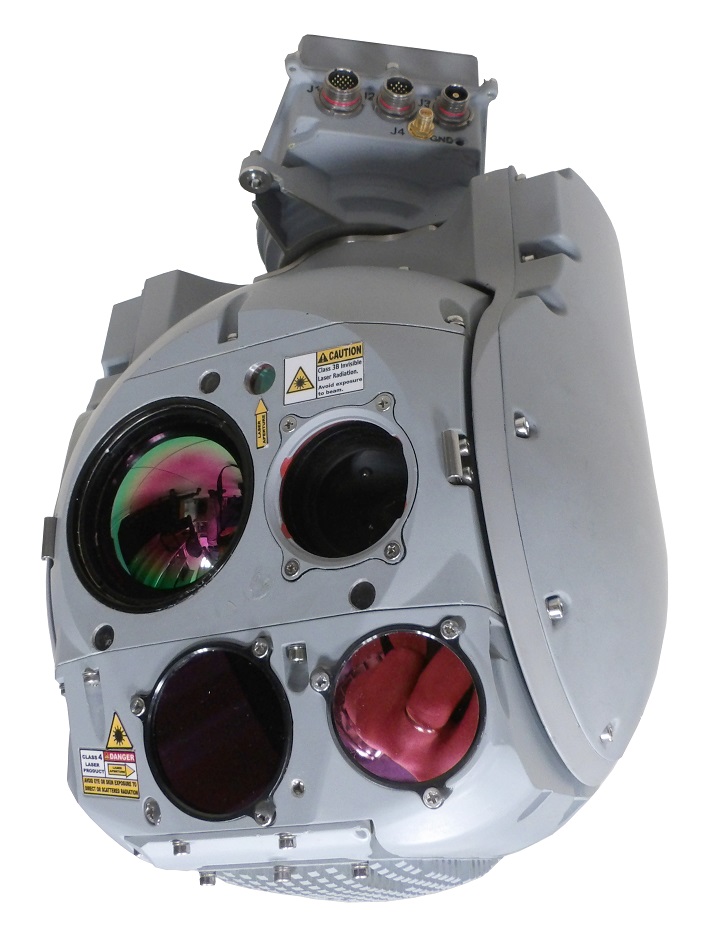

The Aeronautical Development Establishment (ADE), a premier research and development laboratory under DRDO, has recently sent back a defective Long Range Electro-Optic (LREO) system, the IAI Tamam, to its Israeli manufacturer. This decision was taken after the unit encountered technical difficulties during flight trials.
The LREO system is a critical component of various UAV platforms, providing essential intelligence, surveillance, and reconnaissance capabilities. The unit’s malfunction has temporarily impacted the operational readiness of these platforms.
Continue readingSOURCE: RAUNAK KUNDE / NEWS BEAT / IDRW.ORG
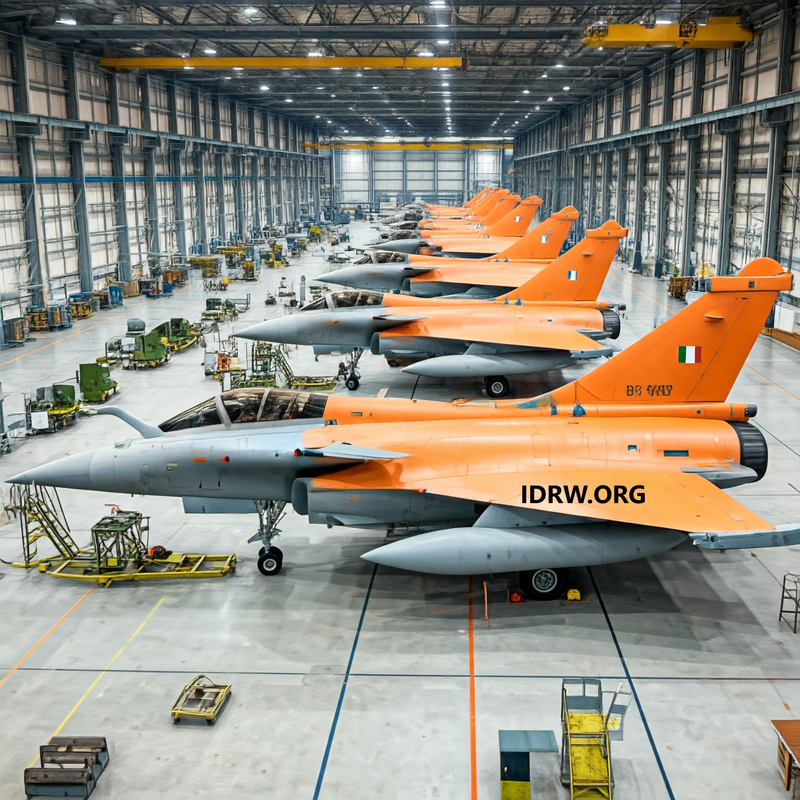

The Indian Air Force’s (IAF) long-awaited Medium Role Fighter Aircraft (MRFA) tender, aimed at acquiring 114 advanced fighter jets, is facing an additional challenge as local production costs are projected to exceed direct procurement prices by $20-30 million per jet. According to an IAF official who spoke to idrw.org, manufacturing these jets locally—an integral part of the Make in India initiative—would incur significantly higher expenses compared to acquiring them directly from the original equipment manufacturers (OEMs).
The MRFA tender includes four twin-engine fighters in consideration: the Boeing F/A-18E/F Super Hornet Block III, the Eurofighter Typhoon, the Russian MiG-35, and the Dassault Rafale. Additionally, two single-engine options, the Lockheed Martin F-16 Block V (marketed as the F-21) and Saab’s Gripen-E, have also been proposed. While all six fighters present advanced capabilities, the increased costs associated with establishing local production lines, building specialized infrastructure, and training a domestic workforce will push the final price per unit well above what a direct OEM purchase would entail.
Continue readingSOURCE: RAUNAK KUNDE / NEWS BEAT / IDRW.ORG
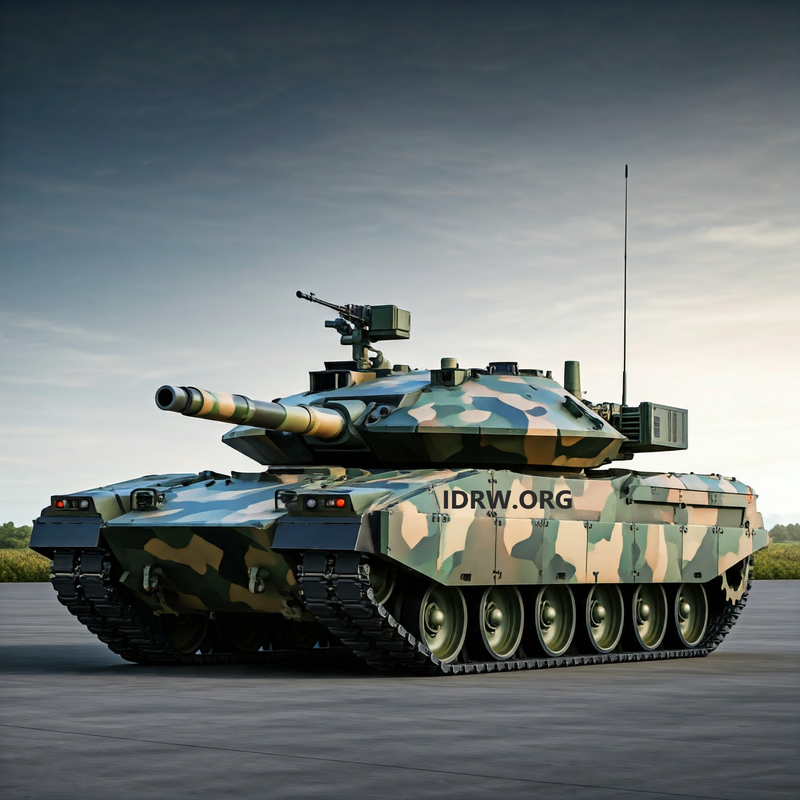

India’s Future Ready Combat Vehicle (FRCV) program is setting an ambitious course for the modernization of the Indian Army’s armoured forces by developing a next-generation main battle tank (MBT) to replace its ageing fleet of T-72 tanks. The program is not only focused on creating a more advanced, capable tank but is also exploring the potential for autonomous, unmanned combat vehicles.
These unmanned MBTs are envisioned to operate autonomously, leveraging direct satellite links for real-time battlefield data exchange, robust communication networks, and advanced firepower capabilities to transform combat operations. Here’s a look into the transformative technology and vision guiding India’s FRCV program.
Continue readingSOURCE: RAUNAK KUNDE / NEWS BEAT / IDRW.ORG


Swedish defence giant Saab has presented a compelling proposal to the Indian Air Force (IAF) under its Medium Role Fighter Aircraft (MRFA) tender, offering its Gripen-E fighter jet with a comprehensive “Make in India” production strategy. Saab not only plans to set up a production line for the Gripen-E in India but has also offered its expertise to support the production line of India’s indigenous Advanced Medium Combat Aircraft (AMCA) program. This collaboration would leverage Saab’s experience in digital engineering and fighter jet production to aid India in establishing a modernized manufacturing ecosystem.
Saab officials have highlighted India’s availability of a skilled workforce and the potential for advanced digital engineering techniques, noting that recent projects, such as the Gripen-E, have allowed Saab to refine its high-tech production capabilities. Saab’s proposal goes beyond the MRFA requirements, potentially positioning itself as a key partner in enhancing India’s domestic fighter manufacturing capability, especially for complex, next-generation platforms.
Continue readingSOURCE: AFI
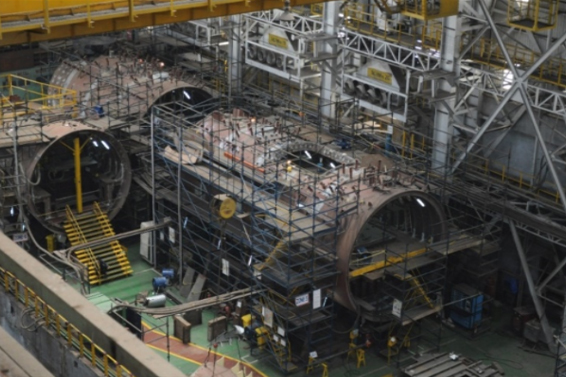

Mazagon Dock Shipbuilders Limited (MDL), India’s premier shipbuilder, is set to participate in the 13th International Naval and Maritime Exhibition and Conference for Latin America (Exponaval 2024). The event, which is one of the largest naval and maritime exhibitions in the region, will take place in Valparaíso, Chile, from December 3 to December 6, 2024. MDL’s participation highlights India’s expanding defense industry and its growing footprint in the global maritime sector.
MDL will present its expertise in designing, building, and delivering a wide range of naval platforms. The offerings at Exponaval 2024 will include:
Continue readingSOURCE: AFI


The Indian Navy is at the forefront of technological advancement, actively pursuing the development of High-Power Microwave (HPM) weapon systems to bolster its maritime capabilities. These sophisticated directed-energy weapons harness the power of concentrated microwave energy to disrupt or destroy electronic systems in various targets, including drones and missiles. By emitting high-peak-power radio frequency waves, HPM weapons can instantly disable electronic components upon impact.
HPM weapons offer several advantages over traditional kinetic weapons. They enable rapid engagement, precise targeting, and extensive ammunition capabilities. Additionally, they require significantly lower power compared to kinetic weapons, making them an energy-efficient solution. These attributes make HPM weapons a crucial component of modern military strategies for countering emerging threats while minimizing collateral damage.
Continue readingSOURCE: AFI


EtherealX, a Bangalore-based aerospace startup, is making significant strides in the space launch industry with its ambitious project, the Razor Crest Mk-1. This fully reusable, medium-lift launch vehicle is designed to significantly reduce the cost of accessing space.
Recently, the company unveiled a render of its powerful Stallion engine, which is set to generate a staggering 925 kN of thrust. This engine will be the primary propulsion system for the Razor Crest Mk-1, propelling it into orbit.
Continue readingSOURCE: AFI


The Indian Army recently acquired 96 ATOR N1200 Specialist Mobility Vehicles (SMVs) manufactured at JSW Gecko’s newly established facility in Chandigarh, Punjab. This acquisition marks a significant step in indigenizing high-mobility, all-terrain vehicles, crucial for military operations in challenging terrains.
The ATOR N1200 is an indigenized version of the SHERP N1200, an amphibious extreme mobility vehicle designed by UK-based Copato Ltd. Copato has partnered with JSW Defence and JSW Gecko through a joint venture and technology supply license agreement to enable local manufacturing in India.
Continue readingSOURCE: IDRW.ORG.


In a significant milestone for India’s nuclear deterrence capabilities, the INS Arihant, India’s first nuclear-powered ballistic missile submarine (SSBN), reportedly conducted its first operational trial of the K-4 Submarine-Launched Ballistic Missile (SLBM) yesterday morning. According to a report by the Times of India, this marks a major step forward in integrating long-range SLBMs into India’s underwater strategic forces.
The K-4 SLBM, with a range of approximately 3,500 km, represents a considerable advancement over the K-15 (B-05) missile, which has a range of 750 km. Until now, tests of the K-4 had been carried out from submerged platforms says TOI report, ensuring the missile’s capabilities in realistic underwater launch scenarios. But idrw.org Reports from 2022 indicated that INS Arihant successfully conducted trials of the K-15 SLBM, marking its ability to operationally deploy short-range SLBMs but also K4 trials were also carried out in the same year as two trials were recorded from Arihant, so technically this could be a second test but first full-range test of the K-4 missile.
Continue readingSOURCE: IDRW.ORG.


The indigenously developed Zorawar light tank has arrived in Ladakh for a month-long trial at the Nyoma field firing range. This critical phase of testing, which commenced in mid-November, is scheduled to conclude by mid-December 2024. Developed by the Defence Research and Development Organisation (DRDO) in collaboration with Larsen & Toubro (L&T), the Zorawar is poised to play a pivotal role in enhancing the Indian Army’s capability in high-altitude and challenging terrains.
The Zorawar light tank has already successfully completed its internal trials and firing trials, which were jointly conducted by L&T and DRDO. These tests validated the tank’s core systems, including its advanced firepower, mobility, and survivability features. Now, the platform has entered the critical user trial phase, where it will be assessed by the Indian Army under operational conditions.
Continue readingSOURCE: AFI


History seems destined to repeat itself in the realm of India’s fighter aircraft procurement. The announcement that a Request for Proposal (RfP) for the acquisition of 114 Multi-Role Fighter Aircraft (MRFA) is “imminent” rings strikingly similar to the ill-fated Medium Multi-Role Combat Aircraft (MMRCA) tender of 2007. Valued at an estimated $20 billion, this is yet again projected to be the most expensive military acquisition in India’s history.
The MRFA tender bears an uncanny resemblance to the MMRCA process that began 17 years ago, aimed at procuring 128 fighters, with 108 to be manufactured in India. After a rigorous selection process, the Rafale emerged victorious in 2012, but the acquisition was scrapped in 2014 in favor of a direct purchase of 36 Rafale jets. This abrupt shift not only derailed the modernization of the Indian Air Force (IAF) but also sparked allegations of irregularities.
Continue readingSOURCE: AFI


The Indian Army is set to bolster its firepower with the acquisition of 200 new and upgraded Konkurs Missile Complexes, specifically designed for its fleet of BMP-2 Infantry Fighting Vehicles (IFVs). This development is part of ongoing efforts to modernise the Army’s armoured capabilities and ensure that its platforms remain combat-ready and effective in evolving battlefield scenarios.
The Konkurs-M, the latest iteration of the system, is a second-generation, semi-automatic, wire-guided anti-tank guided missile (ATGM) system. It is known for its reliability, precision, and capability to engage a variety of armored targets, including those equipped with reactive armor. The Konkurs system has been a staple in the Indian Army’s arsenal, and this acquisition reflects the Army’s confidence in its combat effectiveness and adaptability to modern threats.
Continue readingSOURCE: AFI

The Tejas Mk-II, also known as the Medium Weight Fighter (MWF), represents India’s ambitious leap in indigenous fighter jet development. Over the past decade, the program has undergone significant design modifications, reflecting evolving requirements and the pursuit of advanced capabilities to meet future combat challenges.
The first official mention of the Tejas Mk-II was made in 2009 by Ashok Baweja, then Chairman of HAL, during Aero India 2009. He described the project as a larger, more powerful derivative of the Tejas Mk-I, powered by a next-generation engine. Under P.S. Subramanyam, Director of the Aeronautical Development Agency (ADA), the vision expanded to include five squadrons with 70% indigenous content and a projected first flight in 2014.
Continue readingSOURCE: AFI
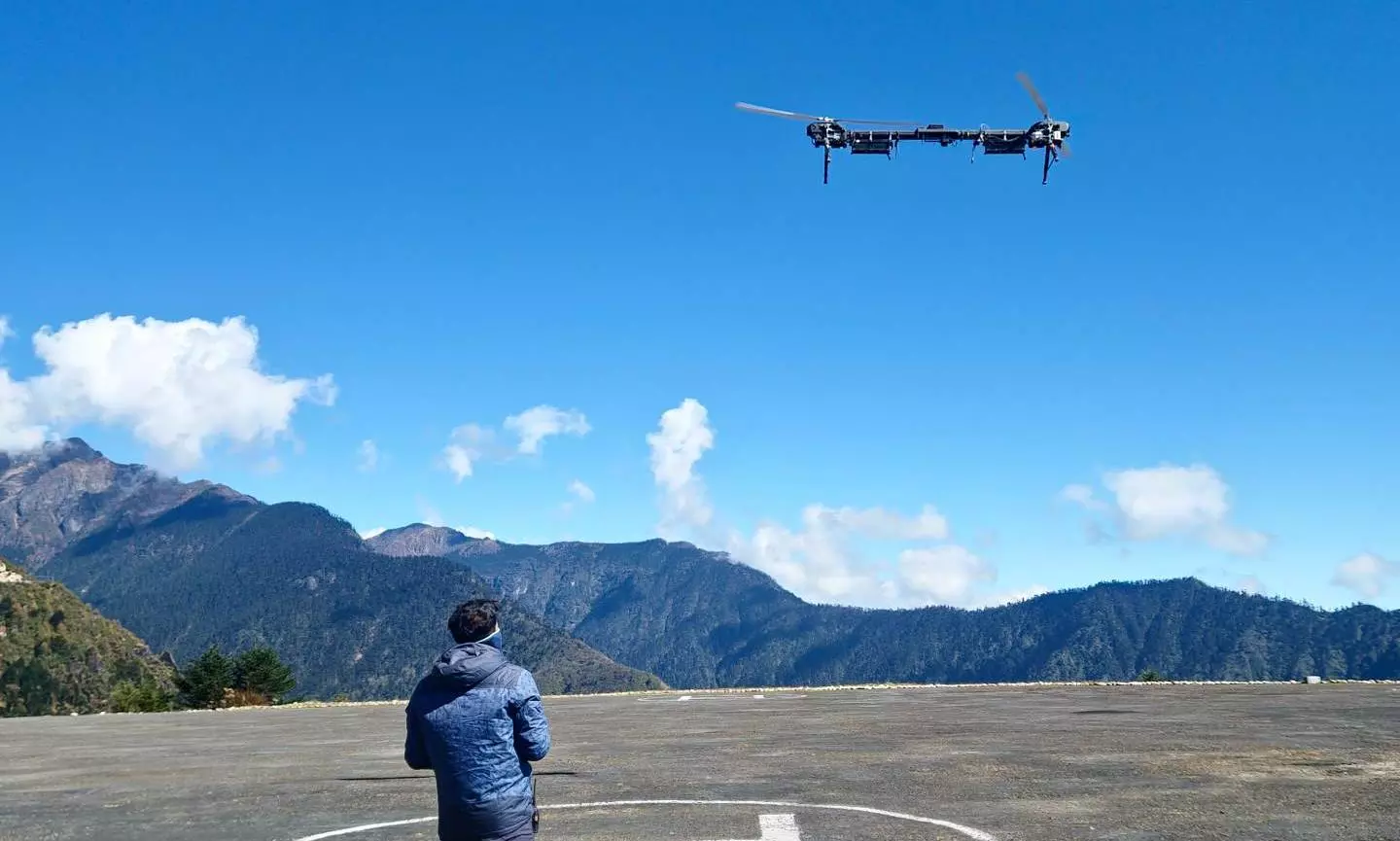

EndureAir Systems, a leading provider of innovative unmanned aerial vehicle (UAV) solutions, has achieved a significant milestone by successfully delivering its state-of-the-art Sabal 20 logistics drone to the Indian Army’s Eastern theatre. This marks a pivotal moment in advancing the Indian Army’s logistics capabilities, particularly in challenging terrains.
The Sabal 20, an electric unmanned helicopter, is designed to revolutionize aerial logistics. Its variable pitch technology empowers it to carry payloads of up to 20 kilograms, which is equivalent to half its weight. This impressive payload capacity, coupled with its scalable design, positions the Sabal 20 as a versatile tool for various military and civilian applications.
Continue readingSOURCE: AFI


In response to the escalating terror attacks in the Jammu region, the Ministry of Home Affairs (MHA) has taken a significant step by establishing a permanent National Security Guard (NSG) hub in the winter capital of Jammu and Kashmir.
This strategic move aims to bolster security and ensure rapid response to any major terrorist incident. The NSG hub, strategically located in Jammu city, will house a substantial number of elite commandos, sufficient to handle any emergency situation that may arise.
Continue reading